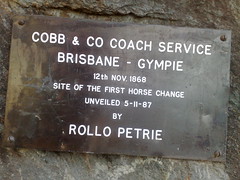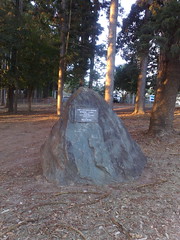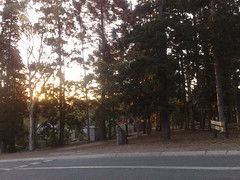


After a tip-off from our local historian, Leith Barter, I found these Pecan Nut trees growiung in Stephen Lawn park, Lawnton.
They were part of a grove planted by “The Acclimatisation Society” in the 1930’s – an organisation created to investigate how best to use the land in this area.
They’re almost 80 years old, and I was curious about them because we live not far from here, on land that was also part of the Acclimatisation Society, and we have a Pecan Nut tree too. But ours is nowhere near as well grown as these majestic specimens.
So the best that I can hope for is that our Pecan is the “son” of a historical nut tree!
Who knows? Maybe it sprouted from a nut dropped by one of the originals.
Thanks, Leith, for patiently answering so many of my questions about our local history!





















